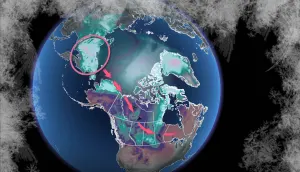
We only need to protect 1.2% of world's surface to stop mass extinction
Experts say the plan is "affordable and achievable."
Saving the planet from another mass extinction could be as simple as protecting just 1.2 per cent of Earth's land, according to new research.
The paper, which appears in the journal Frontiers in Science, highlights biodiversity hotspots. Saving these areas may protect threatened species in an "affordable and achievable" way, the authors argue.
The experts recommend integrating "conservation imperatives" into the ambitious 30 by 30 initiative—a project that aims to protect 30 per cent of Earth's surface by 2030. By doing this, scientists believe we can prevent Earth's sixth great extinction.
In June 2020, Canada signed on to the commitment, pledging to protect 30 per cent of its ocean by 2030.
Rarity is 'concentrated'
Only 1.2 per cent of Earth's surface, or about 17,000 sites, is needed to stave off extinction because most of the planet's species are rare. That rarity is concentrated in critical areas, Dr. Eric Dinerstein of the NGO Resolve, lead author of the article, explains in a statement.
"These sites are home to over 4,700 threatened species in some of the world's most biodiverse yet threatened ecosystems. These include not only mammals and birds that rely on large intact habitats, like the tamaraw in the Philippines and the Celebes crested macaque in Sulawesi Indonesia, but also range-restricted amphibians and rare plant species," study co-author Andy Lee says.
The cost of protection
Researchers took data from hundreds of land protection initiatives over the past 14 years to calculate the cost of saving the identified sites.
They landed on an estimated $34 billion, a relative drop in the bucket compared to global economic activity, which was estimated to be $85 trillion U.S. dollars in 2022.
"The $34 billion figure represents less than 0.2 per cent of the United States' GDP, less than 9 per cent of the annual subsidies benefiting the global fossil fuel industry, and a fraction of the revenue generated from the mining and agroforestry industries each year," Lee says.
Protecting against climate change
In addition to preventing mass extinction, the suggested protections could help combat climate change by preserving forests.
"What will we bequeath to future generations? A healthy, vibrant Earth is critical for us to pass on," Dr. Dinerstein says.
"So we've got to get going. We've got to head off the extinction crisis."
RELATED: Canada's most endangered mammal is making a comeback
Header image: Getty.










